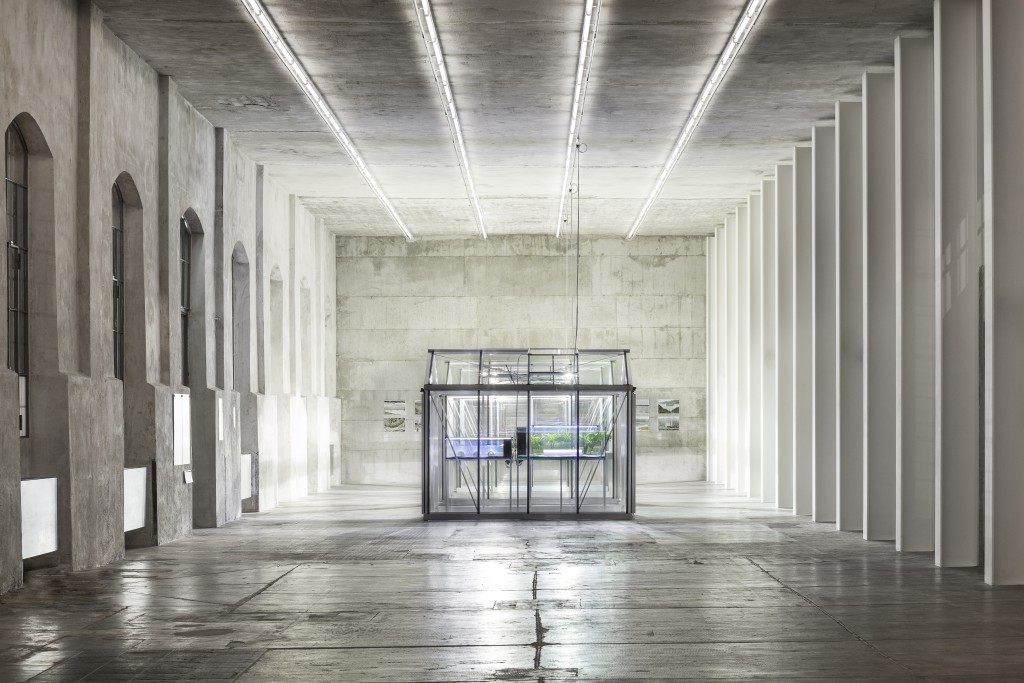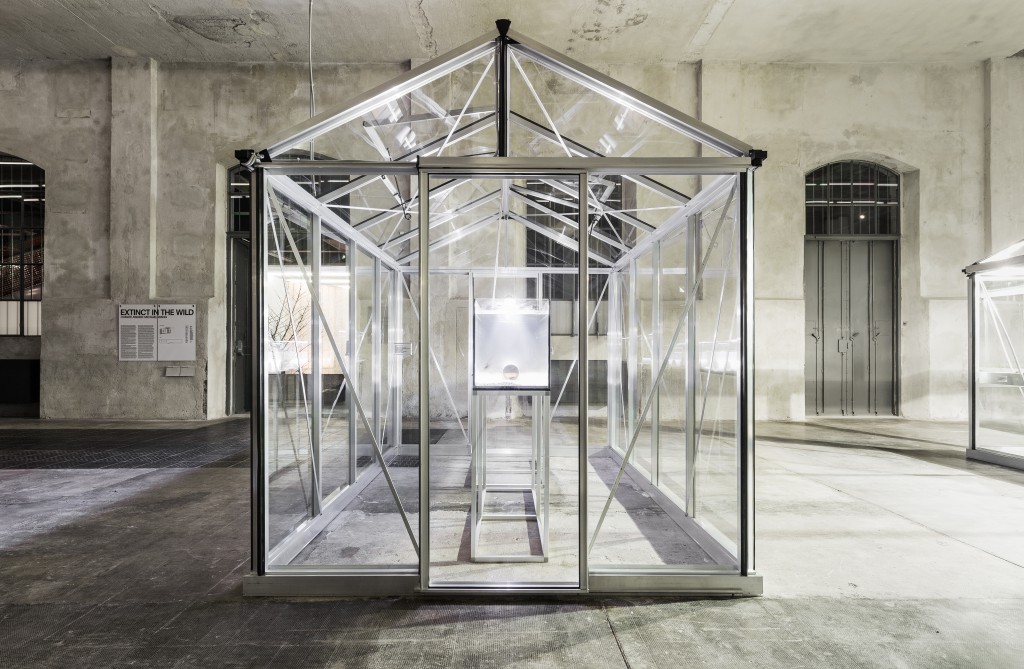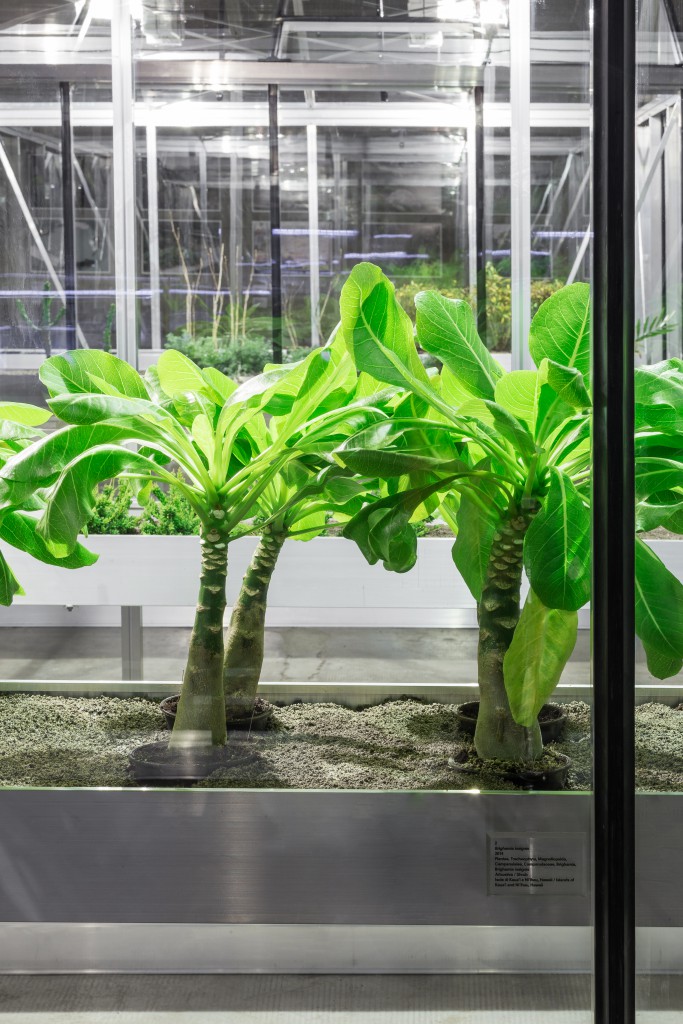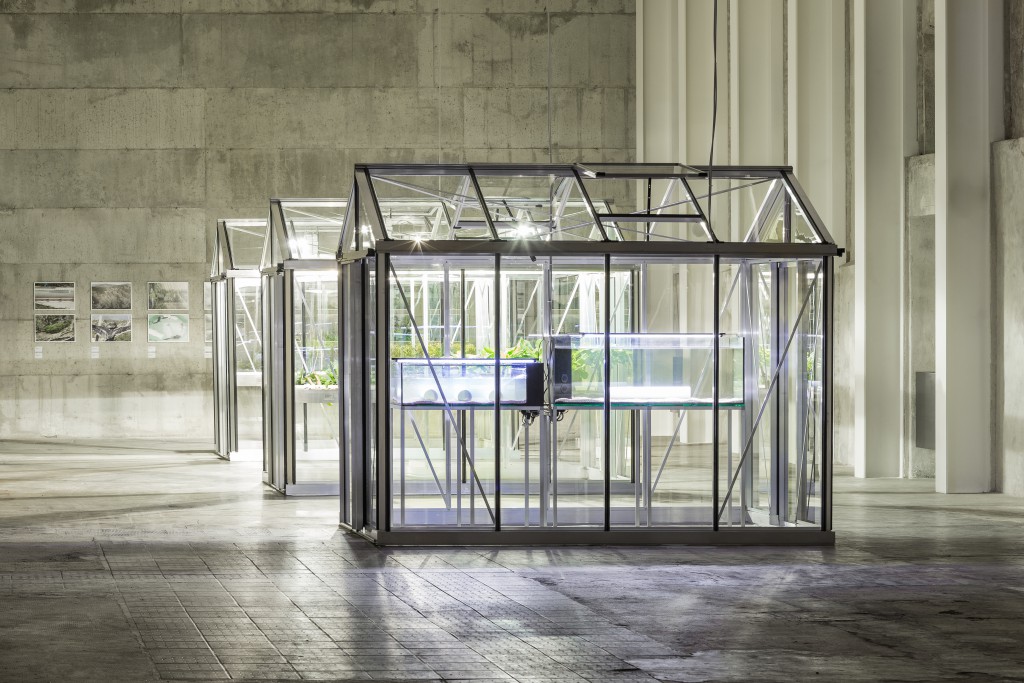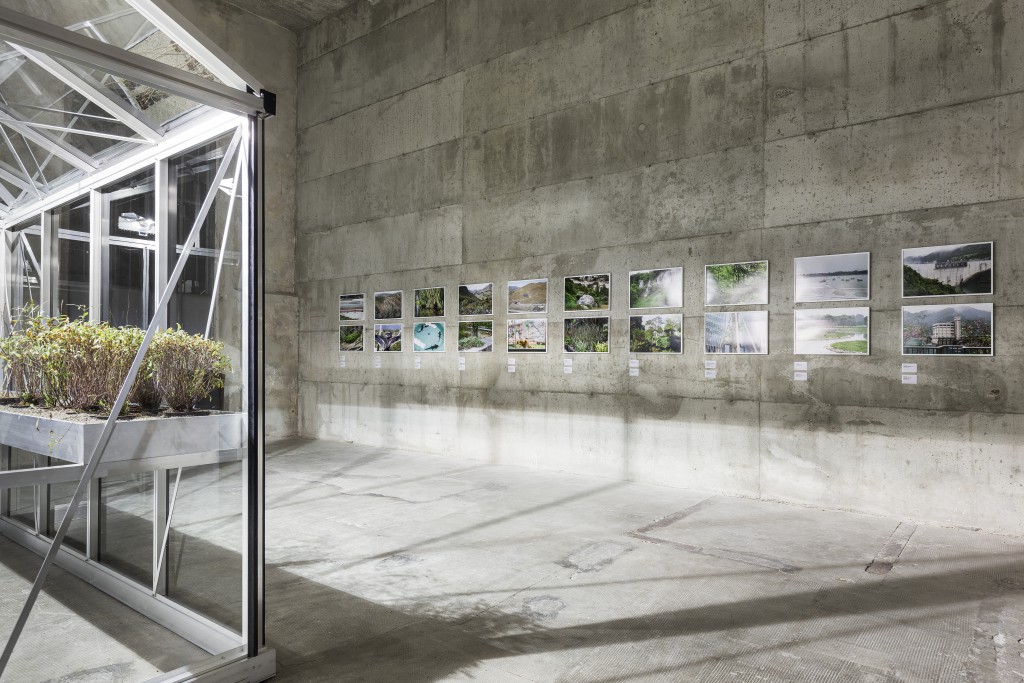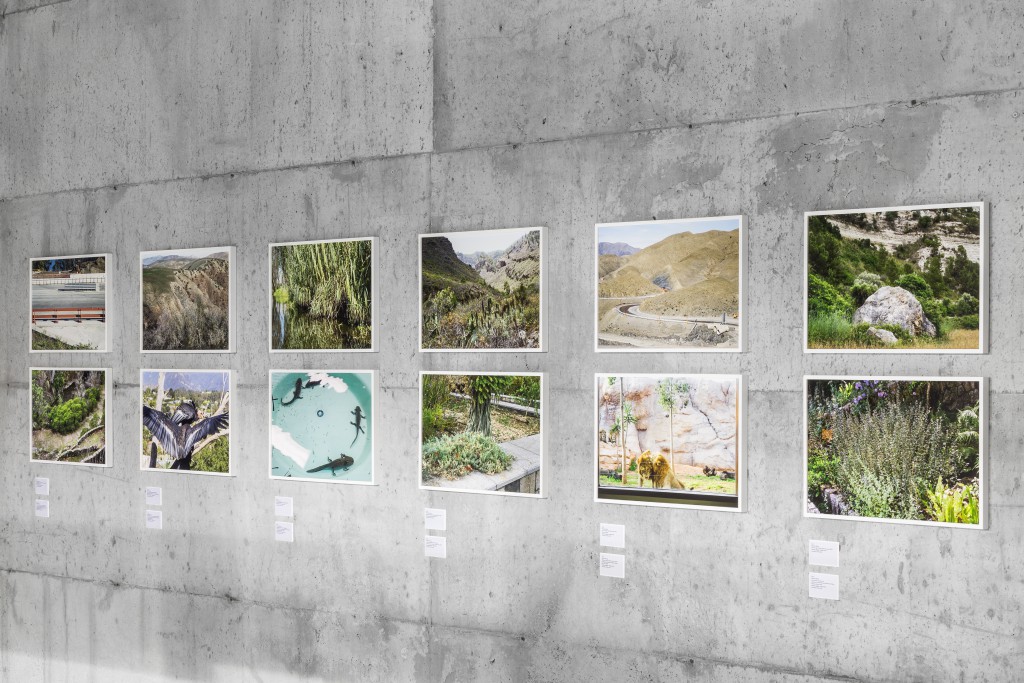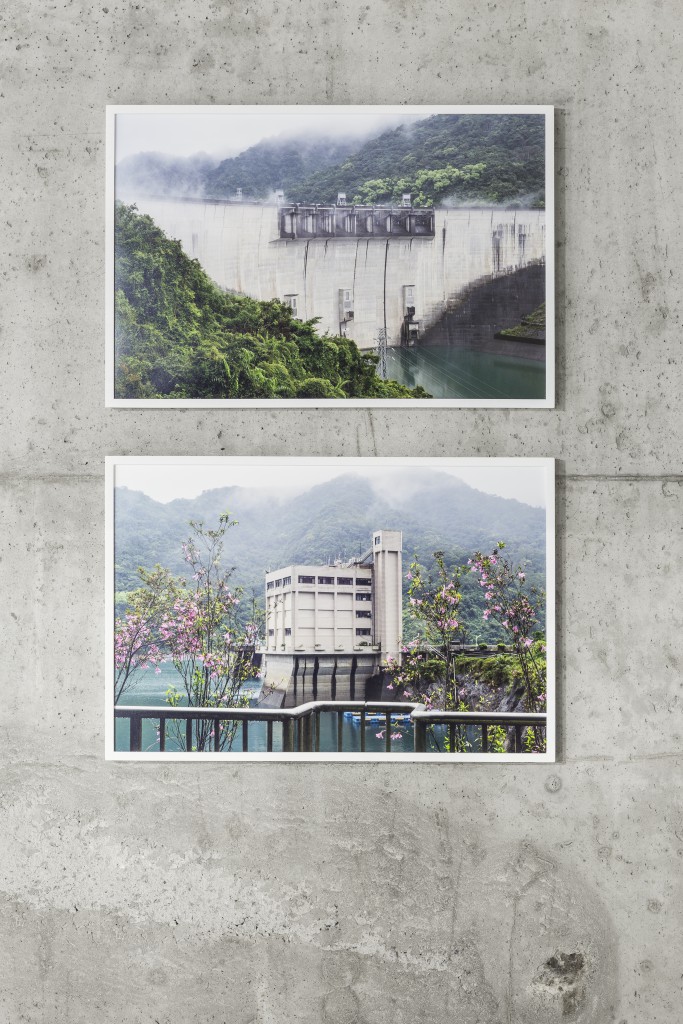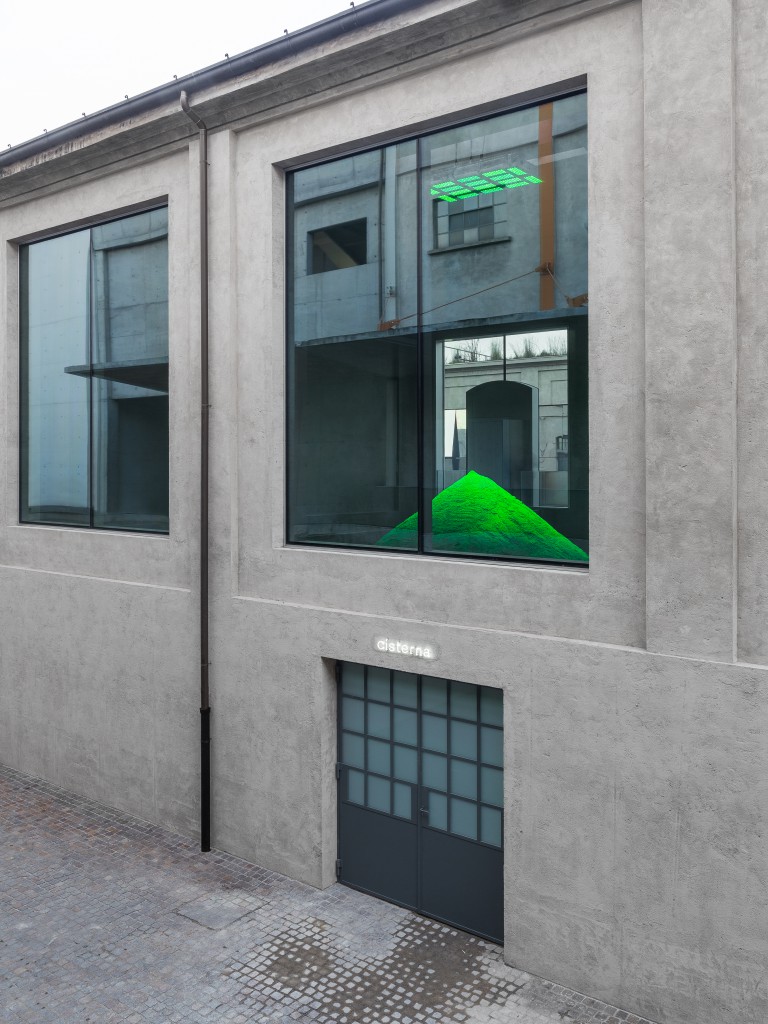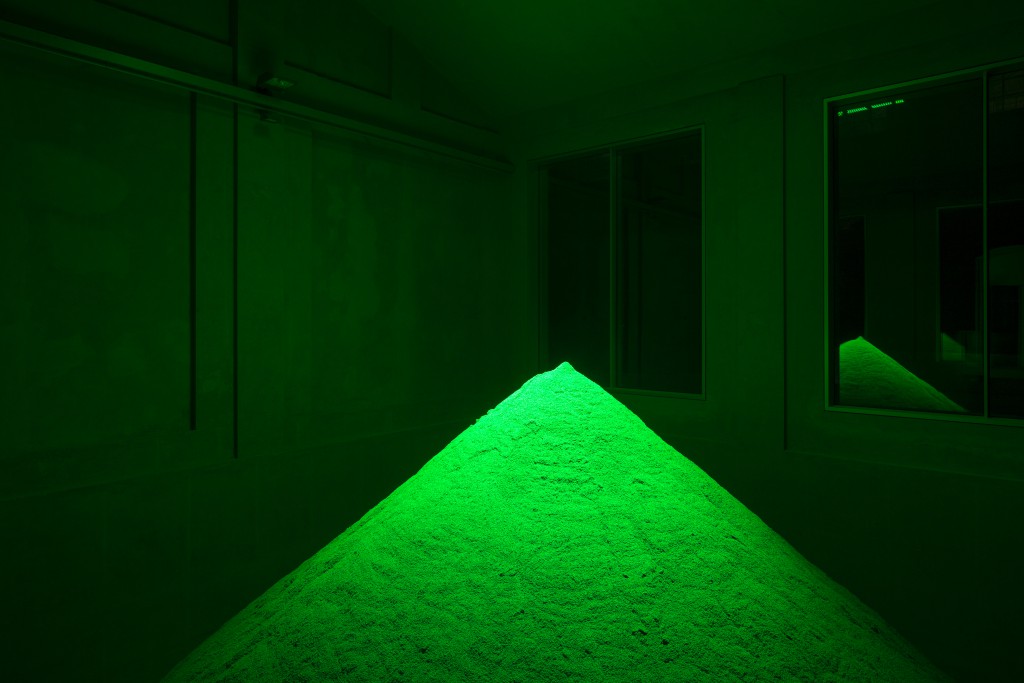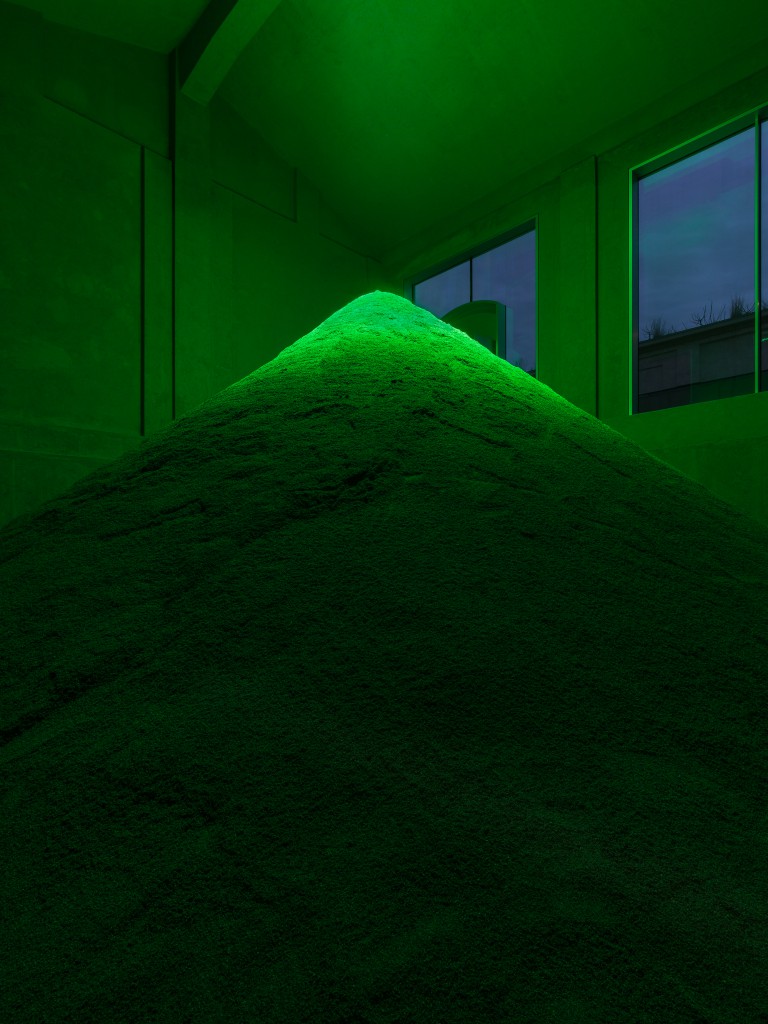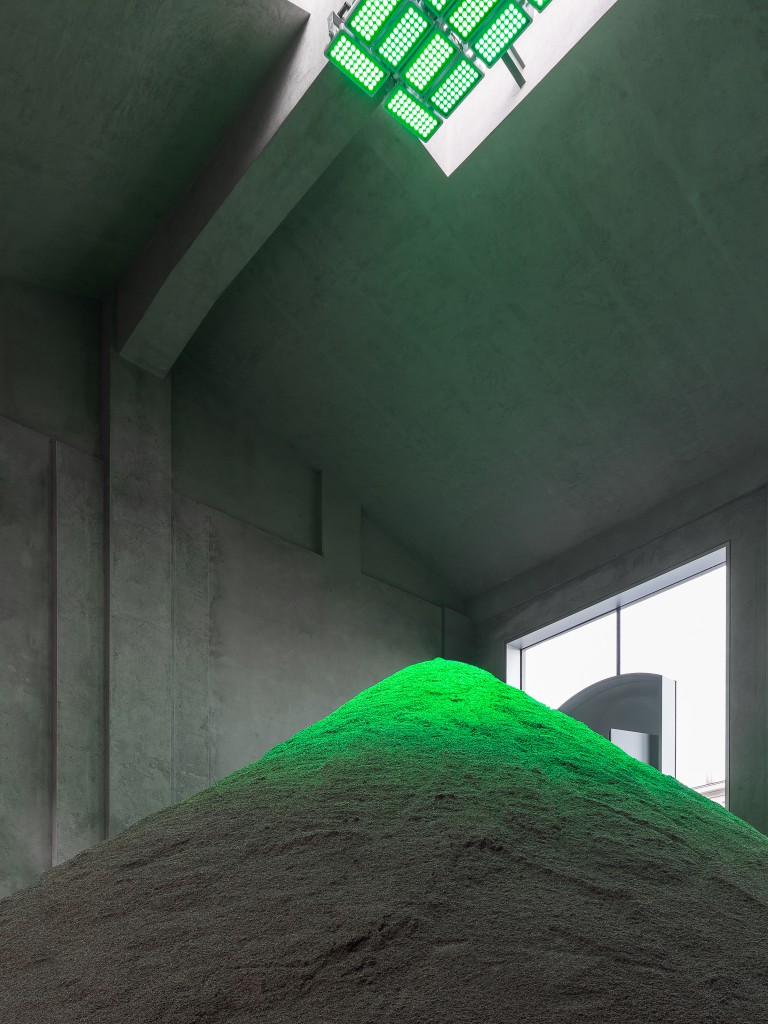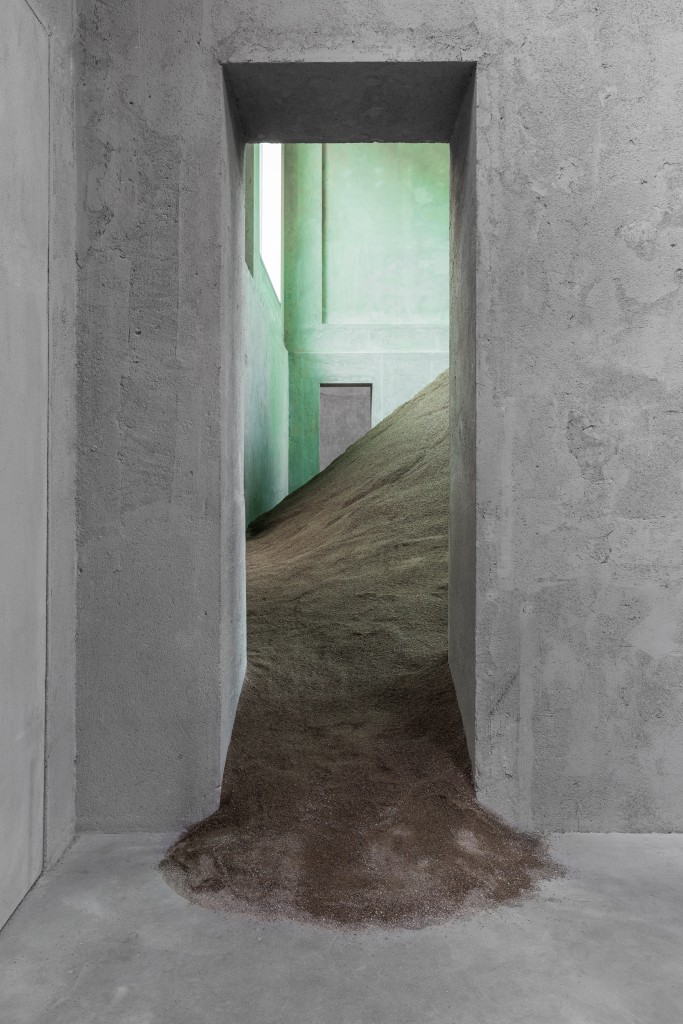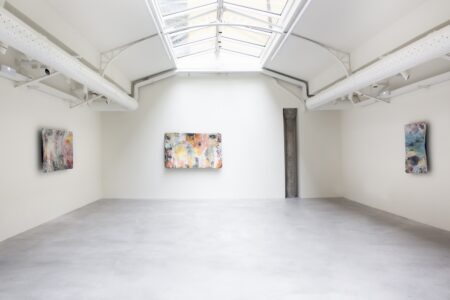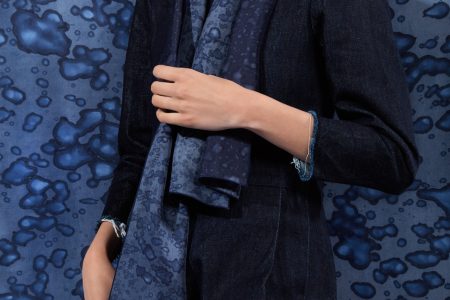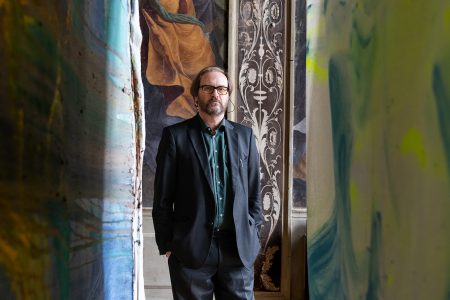Bio Art at Fondazione Prada
Two exhibitions exploring nature, biology and art, Pamela Rosenkranz’s Infection and Michael Wang’s Extinct in the Wild, are showing at Fondazione Prada in Milan.
A large mound of sand, infused with the smell of artificial cat pheromones, is occupying the space of Fondazione Prada’s Cisterna until May 14. Titled Infection, it’s an installation by Pamela Rozenkranz about a neuro-active parasite that is said to affect 30% of humans. The scent of the pheromones is meant to trigger a subconscious reaction in the body, and in turn, the viewer’s response. A green light illuminates the altered state while the odour slowly fades away.
Curated by the Fondazione Prada Thought Council, Infection is the second work in a four-part series, Slight Agitation, which aims to “agitate the mind and the body” by inviting participating artists to enter into a kind of disruptive dialogue with the space of the Cisterna. Inspired by the French historian Fernarnd Braudel’s poetic expression “une légère agitation”, Slight Agitation describes the tidal movements of the Mediterranean Sea. It’s a term that, according to the Thought Council, best encapsulates the varied practices, philosophical approaches and methods of the participating artists.
“Pamela Rosenkranz’s intervention furthers the ambitions of Slight Agitation by offering immersion into a new sensation of embodiment and collectivity,” says the council.
Simultaneously, at the Fondazione Prada’s Nord gallery, Michael Wang’s award-winning Extinct in the Wild shows until April 9. Here extinct species of fauna and flora, no longer found in nature, are kept alive by artificial light in glass and aluminium enclosures.
These include the aquatic axolotl (Ambystoma mexicanum), one of the rarest plant species on earth; the blue cycad (Encephalartos nubimontanus), a plant with fragrant white flowers that boast hallucinatory properties; and angel’s tears (Brugmansia suaveolens). During the course of the show, exhibition staff will look after the live plants and animals, not unlike gardeners, zookeepers, scientists and hobbyists who often are the species’ only lifeline.
A series of 20 photographs, taken by Wang since 2014, also form part of the exhibition. The photos show the natural habitat of various species before they became extinct.
Extinct in the Wild is one of three winning projects of the Curate Award – an international competition presented by Fondazione Prada and Qatar Museums.
